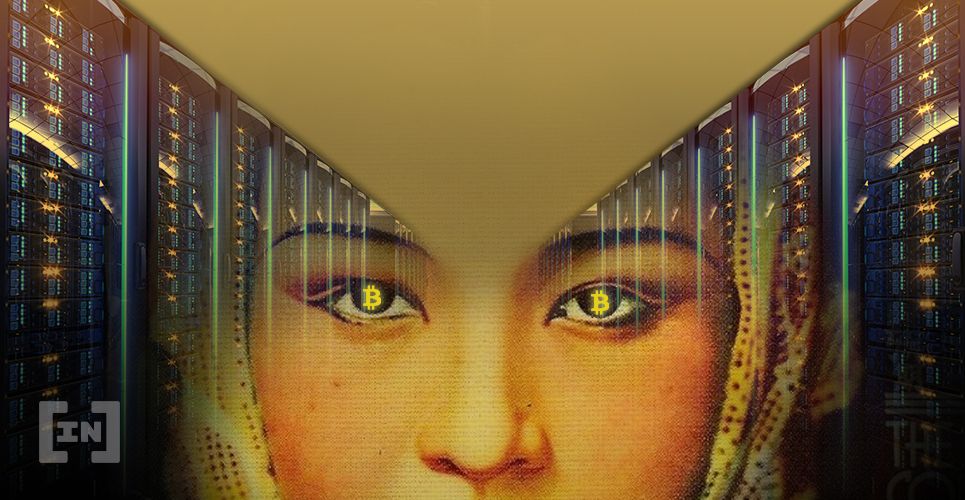2021-3-11 15:46 |
2017 feels like it happened a decade ago for most people, but many of us still have vivid memories of it, especially those who invested actively in the past bull run.
The bull run of 2017/18 was a time like no other. One of the most memorable things about it was the so-called initial coin offering (ICO) craze, where new crypto projects promised enormous gains in a modest amount of time.
One would find it difficult to see the words “ICO” and “craze” being used separately. Two words almost became synonymous with each other, and for a good reason.
Fast forward to 2020/21, and we have another bull run and a new “hot thing” people want to get involved with — DeFi, or decentralized finance space.
The public drew comparisons between two entirely different things because of their meteoric rises. For that reason, I will briefly review how different ICO and DeFi are and why you shouldn’t put them in the same row.
The good, the bad, the uglyICO craze has a negative connotation among investors, mainly because it didn’t stick to its promises and left many early adopters hurt, leaving a sour aftertaste in their mouths.
But it wasn’t bad for all sides.
Many ICO projects were built on top of Ethereum (ETH), making it a platform with an understandable use case. The ICO phase was a transitional period in ether’s growth, and one could say a necessary experience.
Currently, ether’s rally plays a significant role in the surge of DeFi, and now they feed off each other. You could even say that without the ICO craze there would be no DeFi, but they are not the same thing. So what’s the distinction between them?
The first striking difference between DeFi and ICO revolves around the ease of entry. In 2017, it was challenging to participate in most ICOs, while today we have an entirely different setting with decentralized exchanges. The problem of entry is mostly solved, and this is what DeFi prides itself for — being open for everyone and trailblazing a new way of financial services.
DeFi has liquidity mining, yield farming, and liquidity pools replacing the traditional way of gaining interest. Some projects set unrealistic standards and project soaring APY returns that look too good to be true, giving the whole market a bad look. This is also not ideal, but it helped attract retail investors.
The massive growth of the DeFi platform as a whole is eerily similar to a lightweight car accelerating far beyond what its safety carcass can handle, but even then, it’s way different than the ICO phase and its “bubble” like substance.
As stated by Cameron Winklevoss, the co-founder of Gemini, in his September tweet:
“DeFi is not the same as the 2017 ICO craze. Back then, money was raised on sh*tcoin white papers written in coffee shops. DeFi is already living and working in the wild. Billions of dollars are at work earning positive yield. This isn’t hypothetical vaporware, this is real.”
The statement is pretty assertive, but the more popular school of thought claims that DeFi is due to a violent correction, similar to those ETH had in 2017.
How can DeFi dispute that claim?It would make sense to break down DeFi further to understand why it is not the new ICO.
Let’s take a look at the “blue chips” of DeFi that have established themselves over the last year: Compound, Aave, Yearn.Finance, Uniswap, Bancor, Balancer, and Curve. Many of these projects already can be called successful, and they didn’t hit their potential yet, only scratched the surface.
DeFi created new forms of automated market making (AMM) that help raise funds for new projects, which no longer need to undergo the initial coin offering process. Today funds can be raised directly by selling coins in an initial liquidity offering, where projects use their tokens and ETH to create a liquidity pool. AMM protocols create a market for new crypto, and anyone can get the token without being a seasoned investor.
Unlike with the ICOs, DeFi investors can enjoy profits via both appreciation of assets and the use of DeFi’s yield farming.
Participants can constantly move their assets between different pools to gain higher interest. This fuels the DeFi market, but also admittedly conditions the space for wild “pump and dump” schemes, as seen with different “food tokens” like Hotdog, Kimchi, Sushi, among others.
DeFi adopters also have viable concerns about the sector’s status in terms of regulation enforcement, because as we know from history, they ended the ICO craze. It took the United States Securities and Exchange Commission long enough to enforce action against ICOs, even though it gathered a lot more attention from the public, judging by Google Trends.
Compared to the ICO phase, DeFi is still an extremely niche subset of the crypto space, and people from traditional finance have a very vague understanding of it.
Despite that, the total capital locked in various DeFi platforms has risen to $34.86 billion, at the moment of writing this article.
The crypto space and DeFi are evolvingGoogle Trends metric can also suggest that DeFi is still in its infancy, at least popularity-wise. It has room for growth, even though it has far exceeded $5.4 billion raised by the ICOs in the first quarter of 2018.
Today, decentralized exchanges (DEX) are challenging centralized ones for daily volume. Those who trade on both types of exchanges can see DeFi’s long-term potential more clearly, and underline that this is only a start.
The majority of experts involved in the space endorse the emerging use cases and rapid innovations possible thanks to DeFi. Those who observe the situation from outside are taking a more skeptical view for how “bubbly” it looks. Most of DeFi’s problems have been associated with outrageous marketing campaigns and disingenuous developers, not its services as a whole.
Of course, a lack of oversight opens the door for different scams, leading inexperienced investors to invest funds into projects that are not fundamentally sustainable, but this is nothing new. This is one of the things technology wouldn’t be able to solve entirely.
The differences between the boomsBut if we look a little deeper, we will be able to see the differences between the two booms:
Finally, because DeFi is inherently decentralized, the sustainability of this boom is partially in the hands of the community. If we consider the network structure, build systemic trust and seek long-term value, the functionality and innovation of DeFi could create far more value for all of those involved.
We can say one thing with utmost confidence — the DeFi ecosystem requires retail investors as much as experts, it has clear value, and it has little in common with the ICO boom aside from its fast rise.
Like Mark Cuban poignantly pointed out, DeFi is more comparable to the early days of the internet, with new dApps appearing every day, despite the internet being around for ten years.
The post Why You Shouldn’t Put DeFi and ICO in the Same Row appeared first on BeInCrypto.
origin »Defi (DEFI) íà Currencies.ru
|
|




